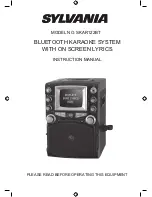
has a long track record of producing some of the best speakers around, but
this time it has taken a major step forward.
The Thiel CS2.7 is a remarkable transducer at any price and a superb value
even at its cost of $7999 a pair. To be quite frank, I expected far more sonic
compromises relative to Thiel’s top-of-the-line CS3.7. In practice, however,
the CS2.7 is one of the most neutral, detailed, and transparent speakers I’ve
heard, and its only real compromises lie in the deepest bass—a sonic area
largely of interest to synthesizer and organ fans.
I also have to say that a photo will not do it justice. If you want to seduce
your wife into accepting a floorstanding speaker—and paying nearly eight
grand for it—the Amberwood version of this speaker is as suitable for
exhibition at MOMA as it is for the listening room, combining a sculptured
profile, a visual impact that manages to be striking without being dominating,
and a size whose shape and height is well suited for real-world listening
rooms without appearing to tower over the rest of the furniture.
But then, as a loyal reader of TAS, you have to at least pretend you could
care less about looks. It should all be about the sound (although a little
“glitter factor” in technology and design can be allowed to creep in).
Sonic Coherence, Treble and Midrange, and the “Coaxial Coincident Driver”
Let me begin with sonic coherence and the soundstage. The Thiel CS2.7
comes close to mimicking a point source. Like other current Thiel designs,
it uses the same
coincident tweeter/midrange driver pioneered in the CS3.7
(see sidebar).
As a result, almost all of the music and soundstage information
emerge from a single driver. Whether this is necessarily better than closely
spaced separate drivers is far from clear. There are many other speakers
including my reference Vandersteen Model 5 Carbons that achieve excellent
coherence with separate tweeters and midranges.
Nevertheless, what Thiel calls a “Coaxial Coincident Driver” not only
produces a remarkably integrated sound without tying the imaging and
soundstage to a location near the speaker or a given driver; it also has the
kind of unity and transparency that full-range ribbons and electrostatics are
praised for.
If you need a written description for techie (read “dork”) status in bragging
sessions with fellow audiophiles, Thiel states that, “the midrange and tweeter
diaphragms are formed of anodized aluminum. The unique ribbed geometry
of the midrange is engineered to deliver immense rigidity and clarity. An
uncharacteristically large diameter voice coil further braces the midrange
against the out-of-phase bending common in virtually all other loudspeaker
drivers. Tremendous control and high output capability is afforded by the
massive neodymium magnets powering the drivers. A very large ring magnet
THiEl
drives the midrange, while five neodymium magnets
drive the tweeter. As with all Thiel designed and built
drivers, this element utilizes a short-coil/long-gap
and copper stabilized motor system to ensure ultra-
low distortion and utter faithfulness to your music.”
Decades of listening to high-end speakers have
taught me that no single design approach is “best” or
“right.” It has also taught me, however, that the finest
speakers do largely live up to their hype.
In this case, the highs and midrange are truly
revealing without any tricks emphasizing the upper
midrange or presence areas, without creating any
apparent peaks in the highs, and without some sweet
spot in loudness or dynamic detail. This comes
across clearly with massed strings and demanding
solo passages with clarinet, trumpet, and flute—
instruments that can all sound hard or lose some
of their musical realism with the wrong driver and
speaker.
As is the case with the CS3.7 and all of today’s best
speakers, the CS2.7 is not forgiving, but it also does
not harden classical music or acoustic instruments.
It is exceptionally revealing of the detail in small
(very well recorded) jazz groups and demanding
rock recordings. It also gets voice consistently
right, avoiding any coloration of male voice in the
midrange and artificial exaggeration of the upper
range of soprano voice or exaggeration of sibilants.
The Sound Stage, the Drivers, and the Cabinet
The radiation patterns of the Coaxial Coincident
Driver are also exceptionally well chosen, provided,
as the instruction manual states, that you keep the
speakers a reasonable distance away from sidewall
reflections. The soundstage has very good coherence
from left to right, without gaps in the middle or
seeming to cut off to the left or right of the speakers.
The sound is consistent at any reasonable listening
height and loses very little upper-octave data and
imaging detail when you are standing. You can use an
unusually wide spread between the speakers without


























